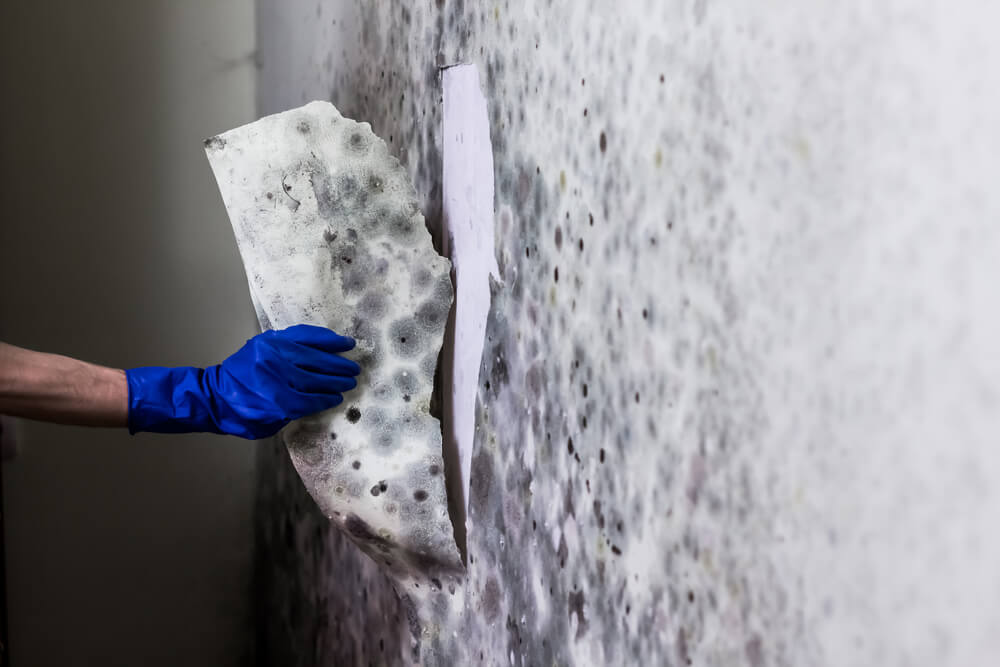Testing Air Quality After Mold Remediation
Your Ultimate Guide to Message Mold Remediation Techniques
In the after-effects of mold and mildew infestation, recognizing just how to properly eliminate the mold and stop its reoccurrence is critical for keeping a healthy and balanced indoor atmosphere. From choosing the ideal cleansing and decontaminating techniques to implementing approaches for lasting mold and mildew prevention, each step in the removal trip plays an important role in making certain an effective end result.
Understanding Post-Mold Remediation Refine
After completing the mold removal process, it is important to recognize the post-mold removal methods that are essential to guarantee a thorough and efficient cleanup. When the mold has been gotten rid of, the next action entails cleaning and decontaminating the impacted locations to protect against any type of regrowth of mold and mildew. This consists of utilizing specialized cleaning up representatives to clean down surfaces and eliminate any kind of continuing to be mold spores. It is important to dry out the location completely to dissuade the development of mold in the future (After mold remediation). Appropriate ventilation and dehumidification can aid in this procedure.
Furthermore, conducting a final assessment post-remediation is crucial to make certain that all mold and mildew has actually been effectively removed. If the examination reveals any kind of lingering mold and mildew, added remediation might be necessary.
Reliable Cleaning Up and Decontaminating Approaches

Preventing Future Mold And Mildew Growth

Value of Proper Air Flow
Correct air flow plays an important function in avoiding dampness accumulation, a crucial consider mold and mildew growth within interior atmospheres. Effective air flow systems assist get rid of excess moisture from the air, decreasing the chances of mold and mildew spores discovering the dampness they require to spread and germinate. Without ample air flow, indoor spaces can end up being a reproduction ground for mold, bring about potential wellness risks and structural damages.
By guaranteeing correct air flow, air their website flow systems can additionally assist in drying damp areas quicker after water damage or flooding occurrences, better hindering mold growth. After mold remediation. In rooms like bathrooms, basements, attic rooms, and kitchen areas where moisture levels tend to be greater, mounting and keeping efficient ventilation systems is critical in stopping mold and mildew infestations

Monitoring and Upkeep Tips
Given the important duty that proper air flow plays in stopping mold growth, it is crucial to establish efficient surveillance and upkeep ideas to make certain the continued functionality of ventilation systems. Regular examinations of air flow systems need to be performed to look for any type of signs of blockages, leakages, or malfunctions that could impede proper air movement. Monitoring humidity degrees within the property is additionally essential, as high moisture can add to mold growth. Installing a hygrometer can aid track humidity levels and alert home owners to any type of spikes that might require interest. Additionally, about his making certain that air filters are frequently cleansed or replaced is vital for maintaining the efficiency of the air flow system. Executing a timetable for routine maintenance tasks, such as air duct cleansing and heating and cooling system inspections, can help protect against problems prior to they escalate. By remaining proactive and attentive to the condition of air flow systems, homeowner can properly alleviate the threat of mold regrowth and keep a healthy and balanced interior atmosphere.
Verdict
In verdict, post-mold remediation strategies are necessary for guaranteeing a tidy and risk-free setting. Understanding the process, applying reliable cleaning and sanitizing techniques, preventing future mold development, preserving proper ventilation, and routine surveillance are all crucial action in the removal process. By following these guidelines, you can effectively get rid of mold and avoid its return, functioning or advertising a healthy and balanced living room for all occupants.
In the consequences of mold and mildew infestation, understanding exactly how to successfully get rid of the mold and mildew and avoid its reoccurrence is vital for preserving a healthy interior atmosphere. When the mold and mildew has actually been eliminated, the following action includes cleaning and sanitizing the influenced locations to prevent any type of regrowth of mold and mildew - what to do after mold remediation. After getting rid of noticeable mold development, it is vital to clean up all surface areas in the affected location to eliminate any kind of staying mold spores. To further enhance find out here mold avoidance measures, it is crucial to attend to underlying concerns that initially led to mold growth.Offered the critical role that appropriate air flow plays in protecting against mold development, it is imperative to develop effective tracking and upkeep ideas to guarantee the continued capability of ventilation systems